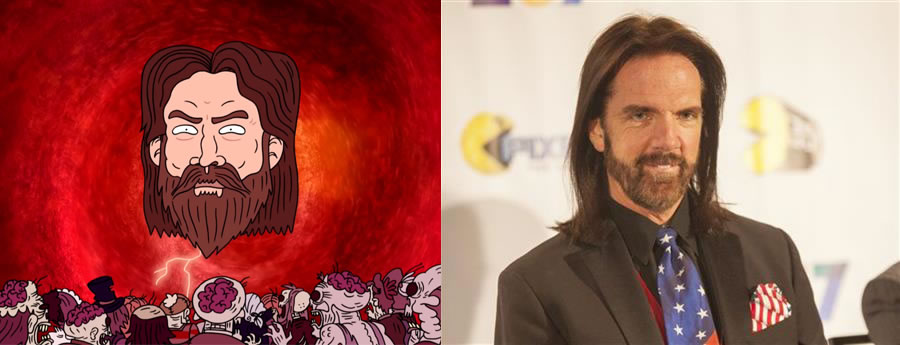
By Zachary Landau | The Duquesne Duke

Popular Cartoon Network cartoon “Regular Show” faced a legal battle after a character in the show appeared to parody “Donkey Kong” record setter Billy Mitchell. “Regular Show” ultimately won the case.
Former “Donkey Kong” champion Billy Mitchell, known for setting the game’s highest score in 1982, made headlines last week after losing a lawsuit against Cartoon Network for the supposed depiction of his likeness in an episode of the “Regular Show.”
The character that apparently infringed his image is named Garrett Bobby Ferguson who is a giant, floating head. Appearing in the episode titled “High Score,” G.B.F., as the character is called, aims to protect his honor as holder of the high score in an arcade game and earn everyone’s respect. He cheats by making up a fake story to gain sympathy from the main characters, Mordecai and Rigby, but still ultimately loses. When he does, he explodes into a shower of “brain goo.”
Mitchell is most well-known for setting numerous high scores in many arcade games, including the first perfect score in “Pac-Man.” He reemerged in recent years in the 2007 documentary “The King of Kong: A Fistful of Quarters” which follows the story of Steve Wiebe surpassing Mitchell’s high score set 25 years prior. Mitchell was unfavorably received in the documentary, as he was depicted as being arrogant and antagonistic to Wiebe, using past grudges to discredit the machine Wiebe used to set the new record. This experience has earned him a reputation for being unwelcoming and hostile in the gaming sphere, as well as vain and self-promoting of his image and brand.
His image was what Mitchell was trying to protect when he sued Cartoon Network, for despite being a giant floating head, G.B.F. also has similar facial features, including a full beard. However, New Jersey Federal District Judge Anne Thompson decided against the lawsuit, citing, among other things, that G.B.F. was made “cartoonishly evil,” and that “the character literally explodes, unlike Plaintiff.”
Cartoon Network itself demonstrated initially that G.B.F. is a transformative depiction of Mitchell, and thus is protected by the First Amendment. Typically in cases involving the likeness of a celebrity, the term “transformative” comes under fire. In order for a work based on a celebrity’s image to be considered “transformative,” it must exhibit a quality separate from the depiction of said celebrity that makes it a reflection of the creator. In other words, the primary reason for the piece’s existence, and the reason someone would want it, has to be for something other than being a depiction of the person.
This precedent was set back in 2001 in the Comedy III Productions, Inc. v. Gary Saderup, Inc. case in California. The case involved the depiction of The Three Stooges on t-shirts and lithographs. In it, the California Supreme Court argues that while, strictly speaking, all artistic work is in some ways transformative, “when an artist’s skill and talent is manifestly subordinated to the overall goal of creating a conventional portrait of a celebrity so as to commercially exploit his or her fame, then the artist’s right of free expression is outweighed by the right of publicity.”
Cases involving a celebrity’s image being used for financial gain are not uncommon. Last March, for instance, Katherine Heigl sued Duane Reade, a drug store chain, for using her image on their social media for $6 million. Back in 2009, Paris Hilton had to sue Hallmark for using her image and catchphrase of “That’s hot,” on a birthday card. While the former may not technically be a case about transformative work, both cases demonstrate that the use of a celebrity’s image is a hotly contested issue from a legal perspective.
However, there are few cases of celebrities that think they need to defend themselves from being portrayed as a floating, exploding head that does not have a body.


